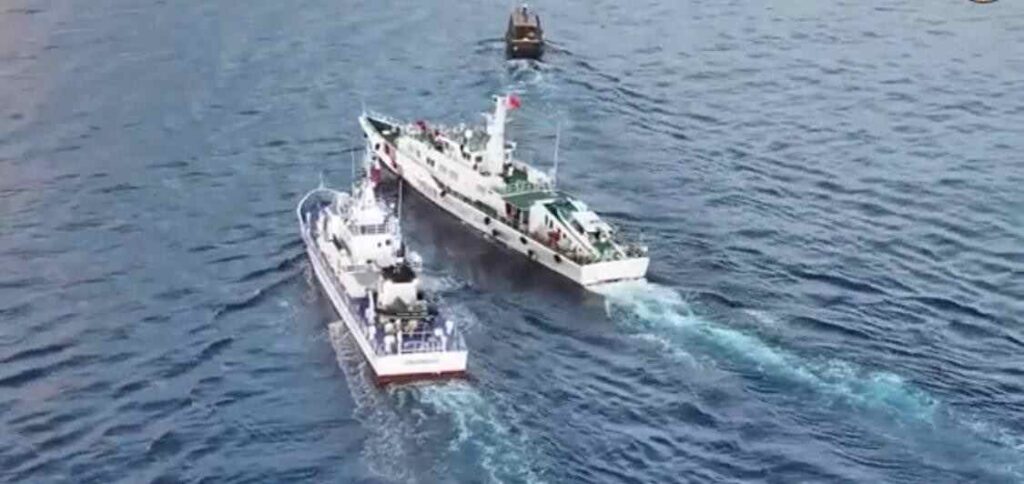According to the Philippines, the Chinese vessels aggressively targeted their ships, which were engaged in legitimate rotation and resupply operations within their own EEZ.

In the complex realm of the South China Sea, accusations and counter-accusations have emerged, with the Philippines pointing fingers at Chinese coastguard vessels for what they claim are deliberate collisions during a resupply mission in disputed waters. This dispute has added another layer to the ongoing tussle for control in the region.
On the other side of the coin, China’s Ministry of Foreign Affairs has fired back, cautioning Manila against using inflammatory language and questioning the integrity of its statements regarding the maritime collisions that transpired over the weekend.
These incidents unfolded in the vicinity of Second Thomas Shoal, a location that falls within the Exclusive Economic Zone (EEZ) claimed by the Philippines. The mission was aimed at resupplying sailors stationed on the Sierra Madre, a vessel grounded by the Philippines in 1999.
Both nations lay claim to this part of the South China Sea, which frequently becomes the stage for maritime confrontations involving coastguard, military, and resupply vessels.
According to the Philippines, the Chinese vessels aggressively targeted their ships, which were engaged in legitimate rotation and resupply operations within their own EEZ. This led Philippine Defense Secretary Gilbert Teodoro to brand the actions as a severe violation of international law.
While the incidents did not result in any casualties, the Philippine government expressed its concern over the escalating provocations by Chinese vessels in the West Philippine Sea.
China, on the other hand, defended its actions, asserting that its coastguard acted lawfully in response to what it deemed as trespassing within its territorial waters, involving the transportation of “illegal construction materials.”
In the midst of this back-and-forth, the United States has thrown its support behind the Philippines, drawing further ire from China, which accuses the U.S. of disregarding the facts.
This maritime dispute underscores the ongoing tensions in the South China Sea, where territorial claims, international law, and the presence of major global players continue to shape the region’s geopolitical landscape.
